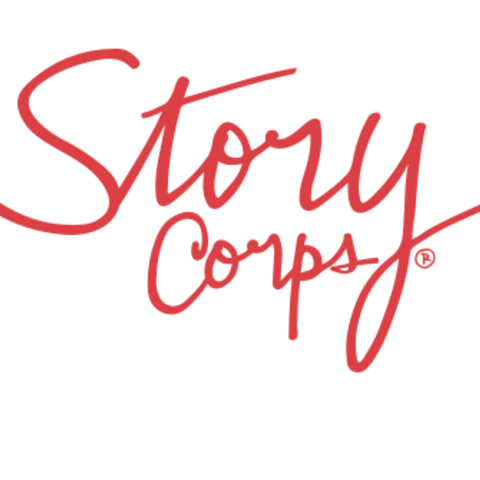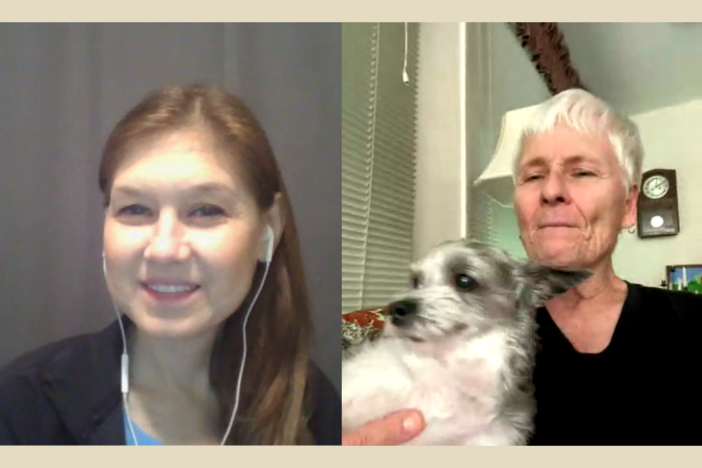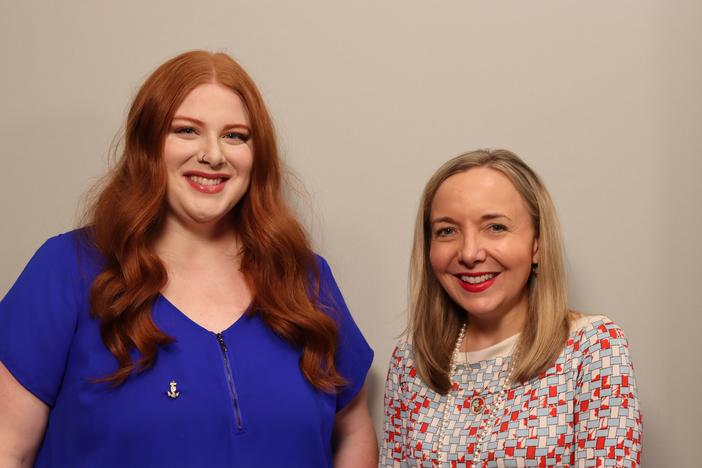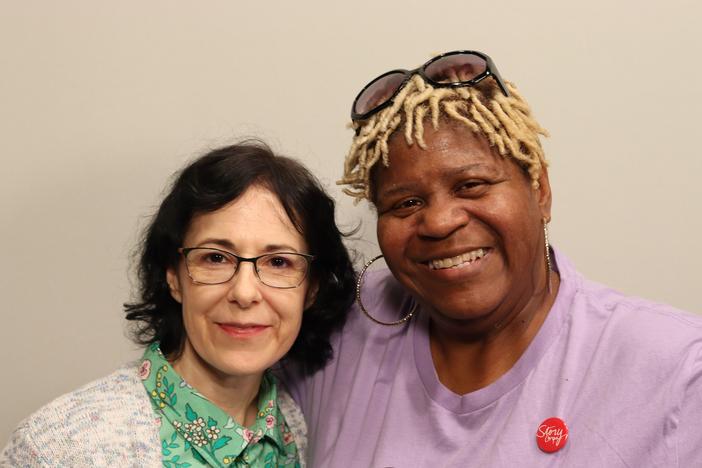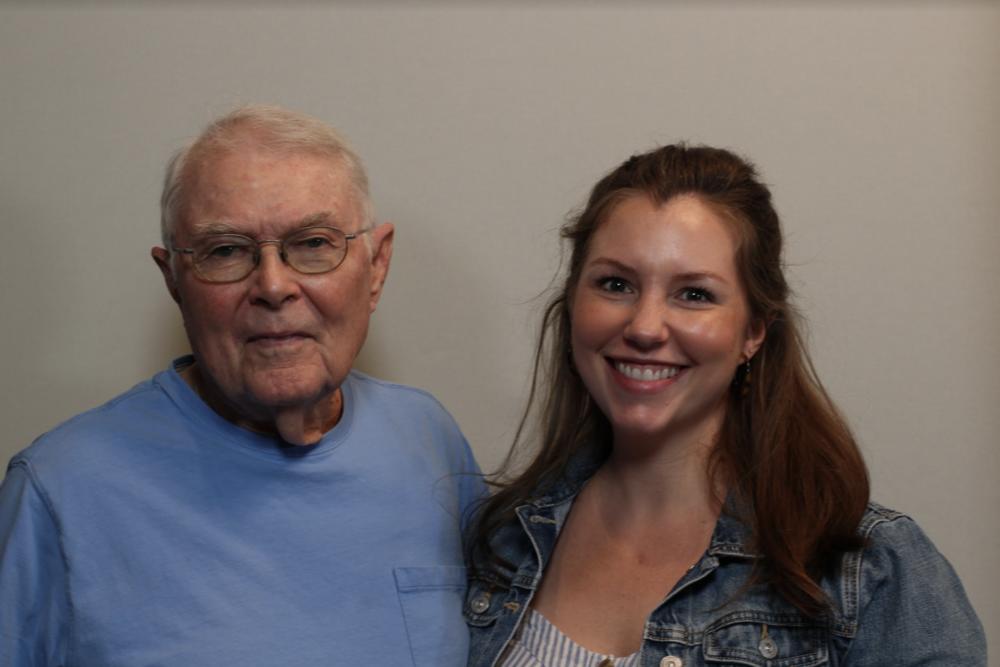
Section Branding
Header Content
StoryCorps Atlanta: Remembering NASA's Space Shuttle Challenger
Primary Content
Barbara Ann Creamer talks with her grandfather, Pat Patterson of Tyrone, Georgia, about his work on the space shuttle.

37 years ago this week, NASA’s Space Shuttle Challenger exploded shortly after takeoff. The disaster occurred when an O-ring seal failed to function properly. In this conversation, Barbara Ann Creamer talks with her grandfather, Pat Patterson, about his work on the space shuttle.
TRANSCRIPT:
Barbara Ann Creamer: You studied engineering at Auburn.
Pat Patterson: Right.
Barbara Ann Creamer: And you wound up at NASA. How did you wind up working for NASA?
Pat Patterson: My dad passed away and my mother was by herself, so I decided to apply for a job in Huntsville, and it was Army Ballistic Missile Agency, and that was in 1956. In 1960, NASA came in and took over. I got involved in a lot of detailed work went on, several companies designed different parts.
Barbara Ann Creamer: To the space shuttle.
Pat Patterson: Booster.
Barbara Ann Creamer: Booster?
Pat Patterson: Correct. There's no telling how many million parts there were. Our job was to make sure that all those parts fitted properly after they were manufactured. We had to go check them and approve them for flight.
Barbara Ann Creamer: So you're working in Cape Canaveral on the boosters. Challenger takes off. It's just like you know, any other launch. Do you remember it? What do you remember about that day?
Pat Patterson: Yeah, I was outside the building watching it.
Barbara Ann Creamer: Were you nervous?
Pat Patterson: No. But you could see the flash. Then the external tank blew up. They had seals on the boosters that were rubber O-rings. If the weather was warm, the O-rings that sealed it would swell as the booster expanded as intended. And it was cold weather. NASA thought that it would expand enough, but it didn't. And when it let the first leak of gas come by the O-ring, it just burned a hole. I had never been told and I hadn't thought about the O-ring, so I called Huntsville and they told me what the problem was and I said, okay, but what?
Barbara Ann Creamer: So then you knew it was on the boosters.
Pat Patterson: Yes.
Barbara Ann Creamer: You were in charge of structure for the boosters in Cape Canaveral.
Pat Patterson: Right. And anyway, they decided to send a submarine, a Navy submarine out and try to find...
Barbara Ann Creamer: Find the wreckage.
Pat Patterson: Yes.
Barbara Ann Creamer: So you were looking for one piece.
Pat Patterson: Was looking for the one piece where the damage was, where it burned the hole in the booster.
Barbara Ann Creamer: It was them. And you were the one, the NASA man.
Pat Patterson: I was the NASA man. After we got through searching for the parts, I went to Utah for nine months.
Barbara Ann Creamer: During that, to redesign that frame of the booster then a joint redesign.
Pat Patterson: I did so many different things.
Barbara Ann Creamer: Yeah, I imagine it was an exciting time. I know that's a lot of years we covered, but thank you for sharing. Your career is the most impressive career that I have ever heard of or been, you know, witness to.
Pat Patterson: I cherished every minute of working for NASA.
This story was produced locally for GPB by Brenda Ford and recorded in partnership with the Atlanta History Center. To learn how to record your own story right here in Atlanta or remotely, visit GPB.org/storycorps.
37 years ago this week, NASA’s Space Shuttle Challenger exploded shortly after takeoff. The disaster occurred when an O-ring seal failed to function properly. In this conversation, Barbara Ann Creamer talks with her grandfather, Pat Patterson, about his work on the space shuttle.

